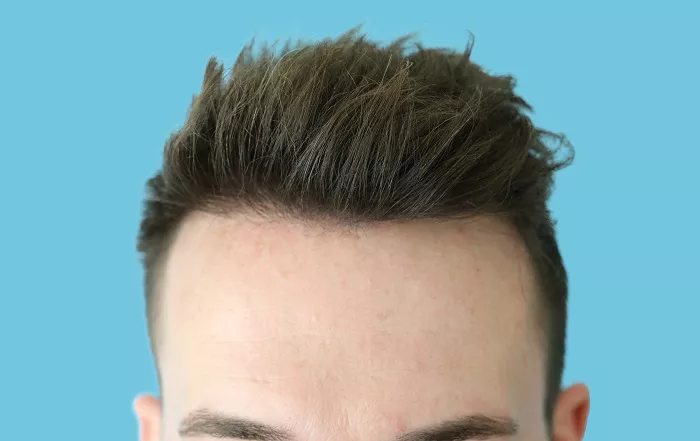Hair transplantation has become a popular solution for those suffering from hair loss. Understanding the process of hair growth after a transplant is crucial for patients. It not only helps to manage their expectations but also allows them to take proper care during the recovery period.
The Initial Stages After Hair Transplant
The First Week: Healing Process
After the hair transplant procedure, the first week is mainly focused on the healing of the scalp. The transplanted hair follicles are in a delicate state. There may be some mild swelling and scabbing in the transplanted area. At this point, the hair follicles are firmly in place within the recipient site, but there is no visible sign of new hair growth. It is important to follow the doctor’s instructions carefully during this time to avoid any disruption to the healing process. This includes keeping the scalp clean and avoiding any activities that could cause excessive sweating or trauma to the area.
The Second Week: Shedding of Transplanted Hairs
Around the second week, it is common for the transplanted hairs to shed. This can be a cause of concern for many patients, but it is actually a normal part of the process. The hair follicles are still alive and healthy, but the initial transplanted hairs are pushed out as the follicles start to settle in their new environment. This shedding is similar to the natural hair shedding cycle that occurs in our daily lives. During this period, patients should continue to be gentle with the scalp and avoid any harsh treatments.
The Growth Phases
The First Growth Spurt: 3 – 4 Months
After the initial shedding phase, the first signs of new hair growth usually start to appear between 3 to 4 months. The hair follicles have now adjusted to their new position and are beginning to produce new hair shafts. At this stage, the new hairs may be very fine and barely visible. They may also grow at different rates, so the growth may not be uniform across the transplanted area. It is important to note that the rate of growth can vary from person to person depending on factors such as overall health, diet, and genetic factors related to hair growth. During this time, a healthy diet rich in nutrients like proteins, vitamins (especially biotin and vitamin E), and minerals can support the hair growth process.
The Second Growth Phase: 6 – 8 Months
By 6 – 8 months, the hair should be growing more noticeably. The hair shafts are becoming thicker and longer. The transplanted area will start to look more filled in as more hairs enter the anagen (growth) phase of the hair cycle. Regular follow – up with the hair transplant specialist during this time can help to monitor the progress and address any concerns.
Some patients may notice that certain areas seem to be growing faster than others. This can be due to variations in blood supply and the distribution of healthy follicles during the transplant process.
The Final Growth and Maturity: 12 – 18 Months
After 12 months and up to 18 months, the transplanted hair should reach its full maturity. The hair will have achieved its normal thickness and length, and the overall appearance of the transplanted area will be more or less stable. At this point, patients can fully assess the success of the hair transplant. The new hair will continue to grow and shed in a normal cycle, just like the native hair.
However, it is still important to maintain a healthy lifestyle to ensure the long – term health of the transplanted hair. This includes avoiding smoking, excessive alcohol consumption, and managing stress levels.
Factors Affecting Hair Growth After Transplant
Genetic Factors
Genetics play a significant role in determining how quickly and how well the transplanted hair will grow. If a person has a genetic predisposition for slow hair growth or certain hair conditions, it may affect the outcome of the transplant. For example, if there are genetic issues related to poor blood circulation to the scalp or hormonal imbalances that impact hair growth, these may need to be addressed or managed to optimize the results of the hair transplant.
Overall Health and Lifestyle
A person’s overall health is directly linked to hair growth. A diet lacking in essential nutrients can slow down the growth process. Additionally, lifestyle factors such as smoking, which constricts blood vessels and reduces blood flow to the scalp, can have a negative impact. Stress is another factor that can disrupt the hair growth cycle. High – stress levels can lead to a condition called telogen effluvium, where more hairs enter the resting phase and may fall out prematurely.
Therefore, maintaining a balanced diet, getting regular exercise, and managing stress are all important for optimal hair growth after a transplant.
Post – Transplant Care
Proper post – transplant care is essential for successful hair growth. This includes following the doctor’s instructions regarding washing the scalp, using recommended products, and avoiding activities that could damage the transplanted area. For example, using harsh shampoos or scrubbing the scalp too vigorously can dislodge the newly transplanted follicles or cause inflammation, which can delay or disrupt hair growth. Regular check – ups with the hair transplant specialist also ensure that any potential issues are detected and treated early.
Conclusion
Hair growth after a transplant is a gradual process that occurs over several months. Understanding the different stages and the factors that influence it can help patients have a more realistic expectation and take the necessary steps to support the growth of their new hair. From the initial healing and shedding phases to the various growth spurts, each stage is an important part of the journey towards a successful hair transplant outcome. By taking care of their overall health and following proper post – transplant care, patients can maximize the potential of their transplanted hair and enjoy a more confident appearance.
Related Topics:

